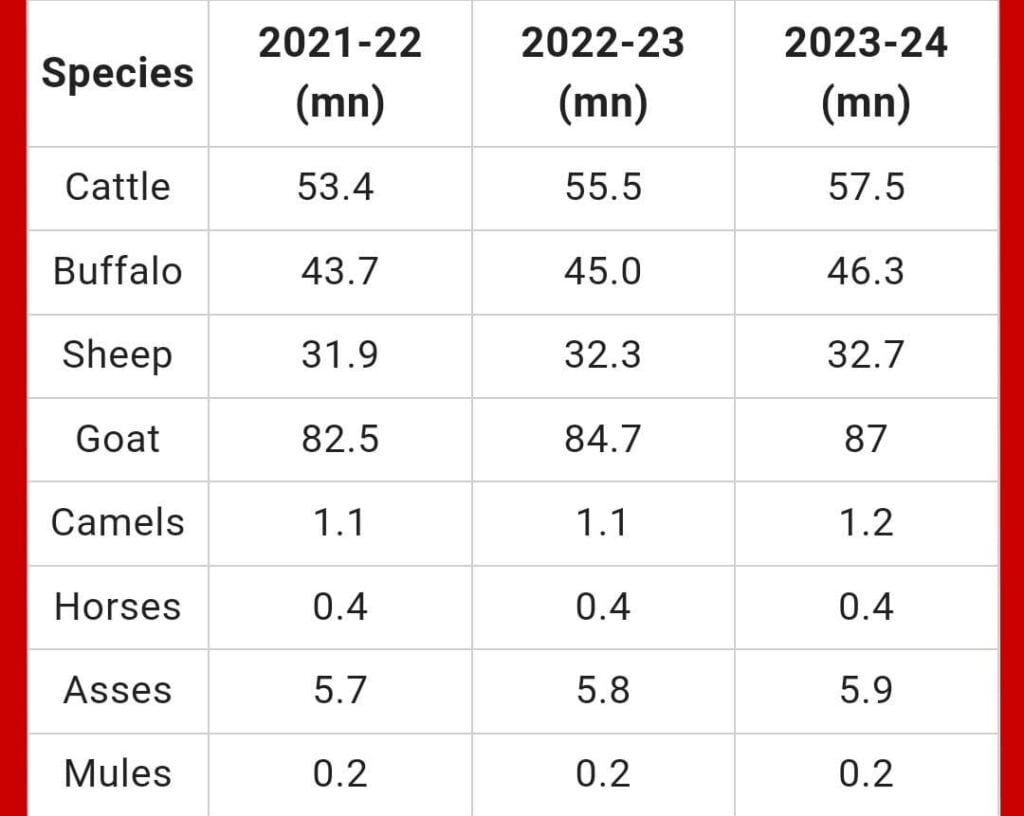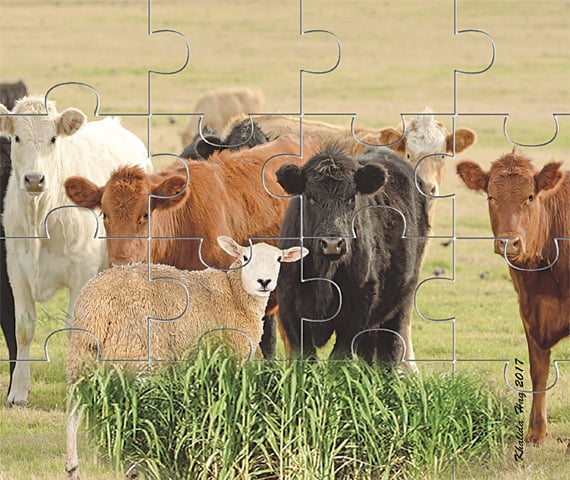In recent release of Pakistan’s economic survey ,Federal Finance Minister Muhammad Aurangzeb surfaced data concerning the livestock in the country .
The report unveiled by Finance Minister Muhammad Aurangzeb furnished data on the population of various livestock. According to the report, the cattle population in the country has risen to 57.5 million, buffalo to 46.3 million, sheep to 32.7 million, and goats to 87 million.

The number of horses and mules has remained unchanged for the past five years, holding steady at 0.4 million and 0.2 million, respectively.
As per the survey, Pakistan’s donkey population has risen to 5.9 million, marking a notable increase from the previous financial year’s count of 5.8 million.
However, the camel population in Pakistan, which had remained static for four years, saw a slight increase from 1.1 million to 1.2 million during the last fiscal year.
Animal husbandry serves as a cornerstone of Pakistan’s rural economy, engaging over 8 million rural families in livestock production.
As indicated by the PES 2023-24, the livestock sector, comprising 60.84% of the agricultural sector and 14.63% of GDP, experienced a growth of 3.89% in 2023-24, up from 3.70% the previous year.
In the broader economic context, the livestock sector has entrenched itself as the primary catalyst for agricultural expansion, constituting approximately 60.84% of agricultural value added and 14.63% of the national GDP in FY2024.
“This sector is crucial for these families, contributing substantially to their livelihoods, accounting for approximately 35% to 40% of their total income.”
The gross value addition of the livestock sector has surged, reaching Rs 5,804 billion in 2023-24 from Rs 5,587 billion in 2022-23, with a growth rate of 3.9%.
Furthermore, the sector’s net foreign exchange earnings play a significant role, contributing around 1.6% to the country’s total exports.
The government acknowledges the inherent potential of this sector for economic growth, food security, and poverty alleviation, thus prioritizing its development.
The overarching strategy for livestock development emphasizes promoting “private sector-led development while the public sector facilitates an enabling environment through policy interventions.”
Regulatory measures have been implemented to enhance per unit animal productivity by improving veterinary health coverage, husbandry practices, animal breeding, assisted reproductive techniques (such as Embryo Transfer Technique and In Vitro Fertilization), artificial insemination services, adoption of balanced ration for animal feeding, and controlling livestock diseases such as FMDE, PPR, LSD, and Avian Influenza.
As per the survey, Pakistan’s donkey population has risen to 5.9 million, marking a notable increase from the previous financial year’s count of 5.8 million.
This upward trajectory in donkey numbers has persisted over the past two years, with an additional 0.2 million donkeys reported within this period.
Additionally, the survey noted that the count of horses has remained static at 0.4 million over the last year, with no growth observed in the camel population.
Furthermore, the survey disclosed a substantial increase in the number of goats and sheep nationwide. During the year, the goat population surged by an impressive 22.2 million, while the count of sheep witnessed a commendable uptick of 4 million.

